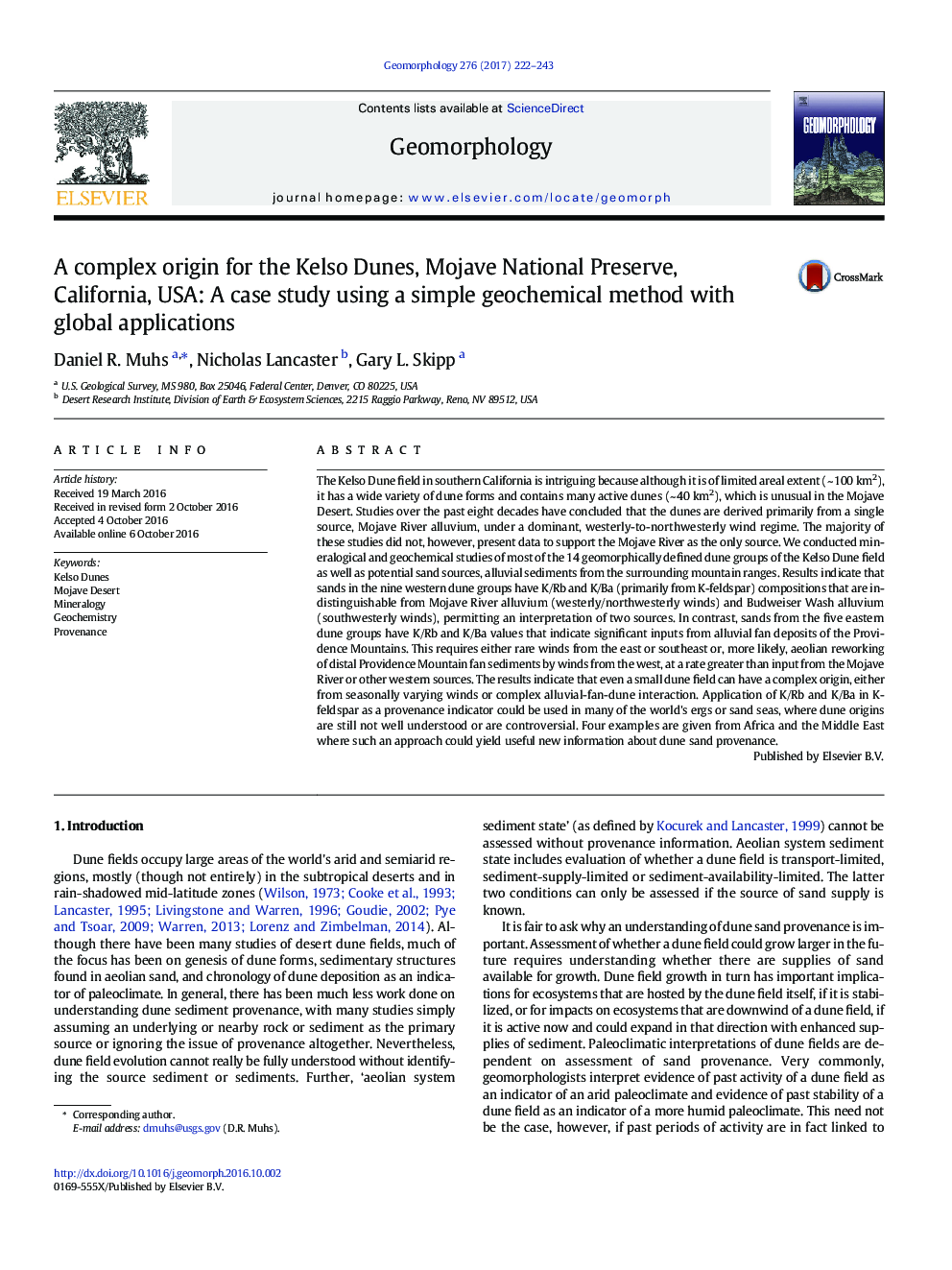| کد مقاله | کد نشریه | سال انتشار | مقاله انگلیسی | نسخه تمام متن |
|---|---|---|---|---|
| 4683853 | 1635373 | 2017 | 22 صفحه PDF | دانلود رایگان |
• The Kelso Dunes of desert California have a complex geomorphology
• Past studies suggest the dunes are quartz-rich, derived from the Mojave River
• The dunes are much richer in K-feldspar than previously supposed
• Alluvial sources can be distinguished using K/Rb and K/Ba in K-feldspar
• The dunes have a complex origin, with possibly three alluvial sources
• Methods employed here could be applied to dune provenance studies worldwide
The Kelso Dune field in southern California is intriguing because although it is of limited areal extent (~ 100 km2), it has a wide variety of dune forms and contains many active dunes (~ 40 km2), which is unusual in the Mojave Desert. Studies over the past eight decades have concluded that the dunes are derived primarily from a single source, Mojave River alluvium, under a dominant, westerly-to-northwesterly wind regime. The majority of these studies did not, however, present data to support the Mojave River as the only source. We conducted mineralogical and geochemical studies of most of the 14 geomorphically defined dune groups of the Kelso Dune field as well as potential sand sources, alluvial sediments from the surrounding mountain ranges. Results indicate that sands in the nine western dune groups have K/Rb and K/Ba (primarily from K-feldspar) compositions that are indistinguishable from Mojave River alluvium (westerly/northwesterly winds) and Budweiser Wash alluvium (southwesterly winds), permitting an interpretation of two sources. In contrast, sands from the five eastern dune groups have K/Rb and K/Ba values that indicate significant inputs from alluvial fan deposits of the Providence Mountains. This requires either rare winds from the east or southeast or, more likely, aeolian reworking of distal Providence Mountain fan sediments by winds from the west, at a rate greater than input from the Mojave River or other western sources. The results indicate that even a small dune field can have a complex origin, either from seasonally varying winds or complex alluvial-fan-dune interaction. Application of K/Rb and K/Ba in K-feldspar as a provenance indicator could be used in many of the world's ergs or sand seas, where dune origins are still not well understood or are controversial. Four examples are given from Africa and the Middle East where such an approach could yield useful new information about dune sand provenance.
Journal: Geomorphology - Volume 276, 1 January 2017, Pages 222–243
